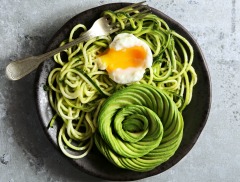Don't just meal plan... meal plan intelligently - with Meal Genius! Sign up for our free newsletter to get delicious recipes, sample meal plans and a whole lot more!
Cheese, Provolone
While similar to Mozzarella, producers use more and different types of cultures to make Provolone, resulting in fuller flavors and better aging.
In earlier times, Italian cheesemakers heated curing rooms with wood fires to impart a slightly smoky flavor to the cheese.
Provolone can vary from slightly piquant and soft when young to sharp, firm and granular when aged.
Because cheese is essentially milk that is condensed it is important to choose provolone cheese made from organic milk, free from hormones
.
The Benefits
- Special diets: Diabetic, Gluten-Free Diet, Grain-Free Diet, Low Acid Diet, Low Carb Diet, Low FODMAP Diet, Low Oxalate Diet, Low Starch Diet, PCOS Diet, Pescetarian Diet, Primal Diet, Vegetarian Diet
- Excellent Source of: Calcium
- Good Source of: Protein, Phosphorous
- Preferences: No Corn, No Fish, No Red Meat, No Pork, No Eggs, No Shellfish, No Gluten, No Nuts, No Seeds, No Soy, No Poultry, No Pseudograins, No Coconut, No Yeast, No Peanuts, No Citrus, No Nightshade, No Legumes, No Grains, Low Carbohydrate, Low Cholesterol, Low Sugars
Related Foods
Selecting and Storing
Choose organic Provolone cheese and keep refrigerated. It pairs well nitrite-free, organic cured meats, tomatoes, pears, grapes, figs; for wines try Beaujalais, Late Harvest Gewurztraminer, Italian beers, and lager beers.









